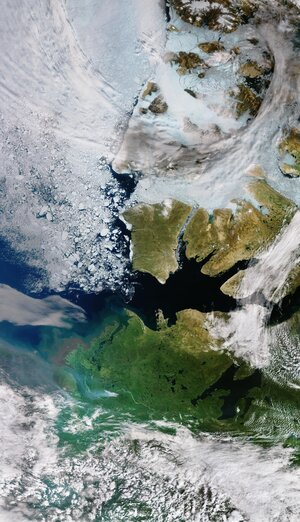Accept all cookies Accept only essential cookies See our Cookie Notice

About ESA
The European Space Agency (ESA) is Europe’s gateway to space. Its mission is to shape the development of Europe’s space capability and ensure that investment in space continues to deliver benefits to the citizens of Europe and the world.
Highlights
ESA - United space in Europe
This is ESA ESA facts Member States & Cooperating States Funding Director General Top management For Member State Delegations European vision European Space Policy ESA & EU Space Councils Responsibility & Sustainability Annual Report Calendar of meetings Corporate newsEstablishments & sites
ESA Headquarters ESA ESTEC ESA ESOC ESA ESRIN ESA EAC ESA ESAC Europe's Spaceport ESA ESEC ESA ECSAT Brussels Office Washington OfficeWorking with ESA
Business with ESA ESA Commercialisation Gateway Law at ESA Careers Cyber resilience at ESA IT at ESA Newsroom Partnerships Merchandising Licence Education Open Space Innovation Platform Integrity and Reporting Administrative Tribunal Health and SafetyMore about ESA
History ESA Historical Archives Exhibitions Publications Art & Culture ESA Merchandise Kids Diversity ESA Brand Centre ESA ChampionsLatest
Space in Member States
Find out more about space activities in our 23 Member States, and understand how ESA works together with their national agencies, institutions and organisations.
Science & Exploration
Exploring our Solar System and unlocking the secrets of the Universe
Go to topicAstronauts
Missions
Juice Euclid Webb Solar Orbiter BepiColombo Gaia ExoMars Cheops Exoplanet missions More missionsActivities
International Space Station Orion service module Gateway Concordia Caves & Pangaea BenefitsLatest
Space Safety
Protecting life and infrastructure on Earth and in orbit
Go to topicAsteroids
Asteroids and Planetary Defence Asteroid danger explained Flyeye telescope: asteroid detection Hera mission: asteroid deflection Near-Earth Object Coordination CentreSpace junk
About space debris Space debris by the numbers Space Environment Report In space refuelling, refurbishing and removingSafety from space
Clean Space ecodesign Zero Debris Technologies Space for Earth Supporting Sustainable DevelopmentApplications
Using space to benefit citizens and meet future challenges on Earth
Go to topicObserving the Earth
Observing the Earth Future EO Copernicus Meteorology Space for our climate Satellite missionsCommercialisation
ESA Commercialisation Gateway Open Space Innovation Platform Business Incubation ESA Space SolutionsLatest
Enabling & Support
Making space accessible and developing the technologies for the future
Go to topicBuilding missions
Space Engineering and Technology Test centre Laboratories Concurrent Design Facility Preparing for the future Shaping the Future Discovery and Preparation Advanced Concepts TeamSpace transportation
Space Transportation Ariane Vega Space Rider Future space transportation Boost! Europe's Spaceport Launches from Europe's Spaceport from 2012Latest
Mackenzie River, Canada
Thank you for liking
You have already liked this page, you can only like it once!
The Copernicus Sentinel-1 mission takes us over the Mackenzie River, a major river system in the Canadian boreal forest. Its basin is the largest in Canada and is the second largest drainage basin of any North American river, after the Mississippi.
Zoom in to see this image at its full resolution or click on the circles to learn more about the features in it.
The Mackenzie River flows through a vast region of forest and tundra through the Northwest Territories from the Great Slave Lake to the Beaufort Sea in the Arctic Ocean. Its delta covers an area around 12 000 sq km, measuring more than 190 km from north to south and is around 80 km wide along the Arctic shore. The maze of branching and intertwining channels is dotted with numerous lakes and ponds.
This wintery, radar image combines three radar acquisitions from the Copernicus Sentinel-1 mission to show changes in land and water surfaces between three acquisition dates: 18 November 2019, 5 December 2019 and 10 January 2020. In the top of the image, parts of the frozen Arctic Ocean can be seen. The different colours are due to the movement and cracking of sea ice between the acquisition dates.
The landscape pictured here is very typical for these latitudes, with the whole region subject to a harsh winter climate. Many of the lakes are frozen during the winter months, with the exception of some of the lakes visible in black in the centre of the image, which are ice-free. One of the lakes appears red most likely due to new ice which has formed between image acquisitions.
The town of Inuvik lies along the east channel of the Mackenzie River delta, around 100 km from the Arctic Ocean and approximately 200 km north of the Arctic Circle. The hamlet of Tuktoyaktuk lies on the shores of the Arctic Ocean and is the only community in Canada on the Arctic Ocean that is connected to the rest of Canada by road.
Around 75% of the Mackenzie basin sits within a permafrost area. Permafrost, ground which remains completely frozen for at least two consecutive years, is common in high latitude regions. With increasing temperatures causing permafrost to thaw, it not only releases methane and carbon dioxide into the atmosphere, but it can cause erosion, flooding and landslides.
Satellite data can be used to map permafrost, even in remote and inaccessible areas such as the Mackenzie River delta. The maps, using data from ESA’s Climate Change Initiative, are the longest, satellite-derived permafrost record currently available.
This image is also featured on the Earth from Space video programme.
-
CREDIT
contains modified Copernicus Sentinel data (2019-20), processed by ESA -
LICENCE
CC BY-SA 3.0 IGO or ESA Standard Licence
(content can be used under either licence)

Earth from Space: Mackenzie River, Canada

Canadian Arctic Archipelago

Lena River Delta

2017 Queensland floods















 Germany
Germany
 Austria
Austria
 Belgium
Belgium
 Denmark
Denmark
 Spain
Spain
 Estonia
Estonia
 Finland
Finland
 France
France
 Greece
Greece
 Hungary
Hungary
 Ireland
Ireland
 Italy
Italy
 Luxembourg
Luxembourg
 Norway
Norway
 The Netherlands
The Netherlands
 Poland
Poland
 Portugal
Portugal
 Czechia
Czechia
 Romania
Romania
 United Kingdom
United Kingdom
 Slovenia
Slovenia
 Sweden
Sweden
 Switzerland
Switzerland

























